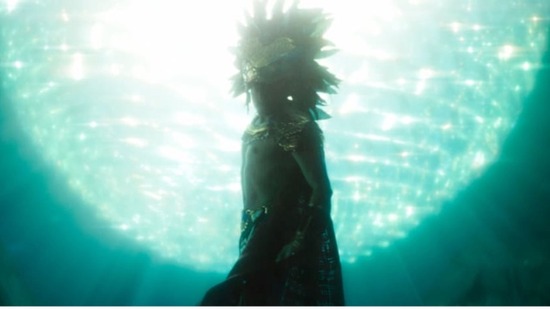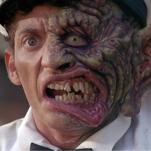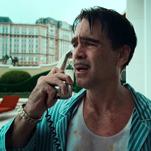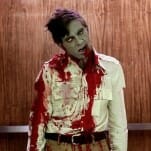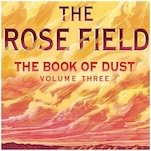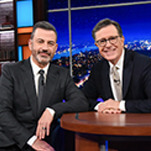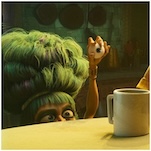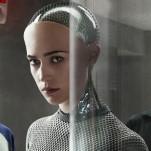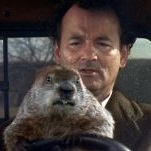The 25 Biggest Opening Weekend Box Offices in U.S. History
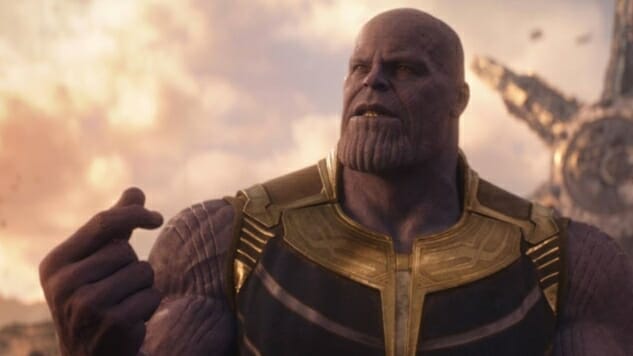
This past weekend, Mattel’s Barbie found herself among superheroes, dinosaurs, wizards, Jedis and talking photorealistic lions on the list of the 25 biggest opening weekends in domestic box office history, as pink-clad moviegoers handed over $155 million in ticket sales. Directed by Greta Gerwig (fun fact: Paste put her on our cover all the way back in 2009), the film is one of a handful that’s not a direct sequel or remake—every movie here is based on already well-established IP.
While there’s certainly some overlap here with the 25 Highest-Grossing Movies of All Time, it’s notable that the three James Cameron films in the top four of that list are nowhere to be found here. Avatar doesn’t crack the Top 100 and Titanic isn’t even in the Top 200. It remains to be seen what kind of staying power Barbie will have.
Here are the highest-grossing opening weekends of all time, according to domestic ticket sales.
25. Captain Marvel (2019)Opening weekend box office: $153 million
Directors: Anna Boden, Ryan Fleck
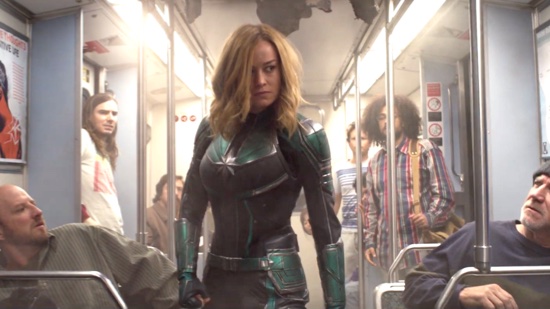
One thing Captain Marvel has going for it that Ant Man and the Wasp didn’t is that it gives us a lead character we can care about and (even more important) an actor (Brie Larson) who rises to the occasion. In many of these Marvel origin stories—and by my count, this is the eighth one since the original Iron Man—the movie goes through great pains to explain to us why we should care about this new character, why, with everything else we have to keep track of, we should readily agree to adding one more to the mix. Captain Marvel, like many MCU movies, sometimes labors under the weight of having to tell its own story while still connecting to the larger, ongoing saga, but it has no issues with justifying its main character: We see in her eyes, from the first second, what’s different about her. The movie has us on her side before she ever says a word. The film is otherwise entertaining and exhausting in the equal measures we have come to expect from modern Marvel movies—if you’ve seen one bad guy bent on galaxy domination, you’ve seen them all. You know the music, so it’s all about how they play the notes. Larson gets valuable support from Jackson and Ben Mendelsohn, still reliably Ben Mendelsohn even under layers of alien makeup, and the ’90s backdrop is at least a welcome changeup from the usual formula. But this movie isn’t about the supporting characters, or the setting, or even how well its big action set pieces play out. It’s all about whether or not they can sell this Captain Marvel as someone who, later, even the mighty Avengers can call to someday help them save the world. In Larson, they have a star who is more than up for the task. You’ve seen this movie before. But you haven’t seen her. (See full review.) —Will Leitch
24. Barbie (2023)Opening weekend box office: $155 million
Director: Greta Gerwig
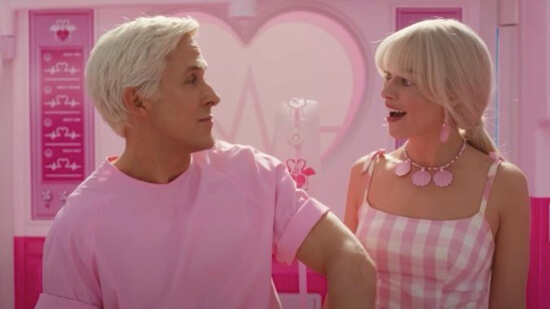
Bursting with big ideas on the complexities surrounding womanhood, patriarchy and the legacy of its eponymous subject, Barbie scores a hat trick for its magnificent balance of comedy, emotional intelligence and cultural relevance. The picture begins with a playful homage to 2001: A Space Odyssey’s Dawn of Man sequence. Except, in Gerwig’s prelude, the apes are young girls and the wondrous discovery they make is not a monolith, but a 100-foot tall bathing-suit-wearing Barbie (Margot Robbie), who is there to put an end to Planet Earth’s sexism with her mere aspirationalism. Life is idyllic until Robbie’s Barbie, who refers to herself as Stereotypical Barbie, begins to experience an unprecedented existential crisis. These uncharacteristic anxieties, coupled with the fact that her once-permanently-tippy-toed feet have fallen flat, lead Barbie on a quest to the Real World in hopes of returning back to her normal, carefree self. When her adoring Ken (Ryan Gosling) joins her in her cross-realm voyage, ideologies are swapped, havoc is wreaked and major changes are brought upon Barbie Land. Gerwig is grappling with these heavy ideas of patriarchy and gender, but Barbie always maintains a delightful sense of play and lightheartedness. This is largely due to the pink, campy, absurd and absolutely bewitching set work created by Barbie’s production designer, Sarah Greenwood, and set decorator, Katie Spencer. The incredible sets that we see in the film are real, tangible places whose presence create a nostalgic desire to feel, grab and touch. The believability of the sets—“this is a real Barbie Dream House and Robbie is a real life Barbie doll,” we think—makes for an interesting meta layer for the film. This sense of self-awareness touches almost every aspect of Barbie, from the set design to the campy performances and even its handling of its source material. Writers Gerwig and Noah Baumbach obviously have a soft spot for Robbie’s character, and the beauty of humans in general, but they don’t allow their work with a large corporation like Mattel to prevent them from exploring Barbie’s complicated legacy throughout the film. Like its protagonist, Barbie is all the things all at once. Funny. Sentimental. Entertaining. Confrontational. Celebratory. Heartfelt. Heartbreaking. Kooky. Emotional. And, maybe most interestingly of all, a damn good time capsule for what was exciting and frightening in mainstream culture at this particular societal moment.—Kathy Michelle Chacón
23. Rogue One: A Star Wars Story (2016)Opening weekend box office: $155 million
Director: Gareth Edwards
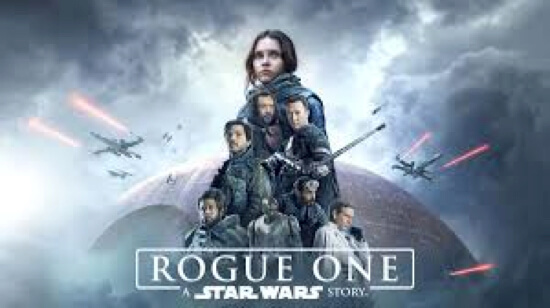
Gareth Edwards’ venture into a galaxy far, far away is the Star Wars film we never knew we needed. It’s a triumphantly thrilling, serious-minded war movie that is incalculably stronger for the fact that it’s NOT the first chapter in a new franchise. Rogue One is a complete film in a way that no other Star Wars movie other than A New Hope is capable of being. It doesn’t “set the stage” for an inevitable next installment, and its characters are all the realer for the fact that they’re not perpetually sheathed in blasterproof Franchise Armor. It is, so help me, a satisfyingly complete story, and I had no idea until I watched the film how refreshing that concept would be. Our protagonist is Jyn Erso (Felicity Jones), a plucky young woman whose brilliant scientist father (Mads Mikkelsen) has been controlled throughout her life by the Empire and coerced into designing superweapons of the moon-sized, planet-killing variety. Forced into a young adulthood on the fringes of the Rebel Alliance, she’s assembled a Jack Sparrow-esque rap sheet and, as the film begins, finds herself in Imperial prison on various petty charges. What Rogue One is, most accurately, is what it was sold as all along: a legitimate war movie/commando story, albeit with some familial entanglements. —Jim Vorel
22. The Hunger Games: Catching Fire (2013)Opening weekend box office: $158 million
Director: Francis Lawrence
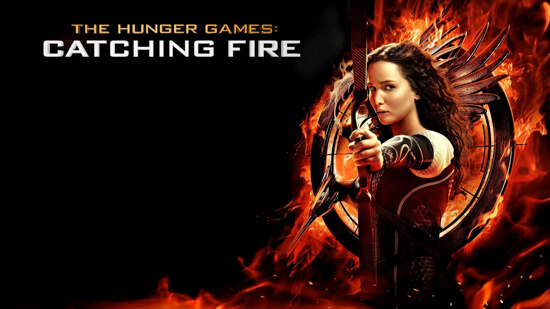
When we last saw Katniss Everdeen (Jennifer Lawrence), she’d just won the Hunger Games, saving both her and her fellow Tribute from District 12, Peeta Mellark (Josh Hutcherson), by defiantly holding out a palmful of poisonous berries. Her victory was short-lived, however, as she realized she’d royally ticked off President Snow (Donald Sutherland) and she’d have to keep up the ruse that she and Peeta were sweethearts if she wanted to survive outside the Arena. Katniss, Peeta and their alcoholic mentor, Haymitch (Woody Harrelson), reside in the nearly abandoned Victors’ Village, living in posh mansions while their friends and neighbors continue to struggle to get by. Meanwhile, there’s unrest in some of the other districts, a rebellion rumbling, and President Snow pays Katniss a personal visit to warn her that the people better believe she threatened to kill herself in the Arena for love, not in defiance of the Capitol—or else. She tries—she really does, despite being a public-relations nightmare for their chaperone, Effie (the delightfully over-the-top Elizabeth Banks)—but it’s not enough, and after the Tour, President Snow and the new Head Gamemaker Plutarch Heavensbee (Philip Seymour Hoffman) devise a plan to get rid of Katniss and quash the rebellion once and for all: For the 75th Hunger Games, the Tributes will be plucked from those who have won the Games before. Working from a smartly adapted script by Simon Beaufoy and Michael DeBruyn, Francis Lawrence emphasizes the story’s cynical critique of celebrity culture, of living one’s lives and loves for the camera, and condemnation of a 1 percent who drink potions to puke during parties so they can eat more while the rest of the country is starving. The Hunger Games: Catching Fire is a stellar sequel and a crackerjack middle chapter. —Annlee Ellingson
21. The Dark Knight (2008)Opening weekend box office: $158 million
Director: Christopher Nolan
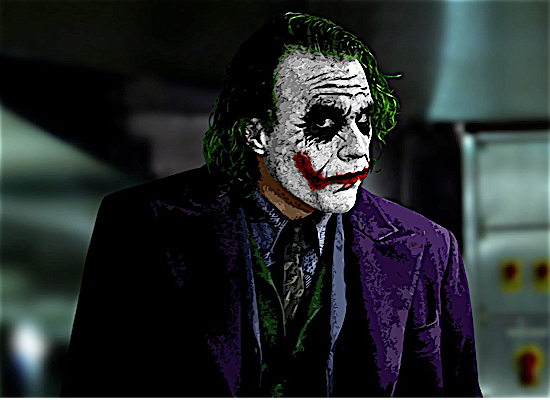
Christopher Nolan’s Batman Begins (2005) deserves the collective sigh of relief it received in resuscitating the Caped Crusader’s cinematic reputation following Joel Schumacher’s 1997 neon-disco nightmare on ice that was Batman & Robin. And if Batman Begins represents the character’s tonal course correction, The Dark Knight provided an equally important act of rehabilitation—that of Batman’s arch-nemesis, the Joker. (Let’s face it, though not a crime of Schumacherian dimensions, Jack Nicholson’s Joker fell short of setting a standard for the character.) Though ostensibly part of the superhero stable, The Dark Knight is, at its center, a proper crime saga—just as was its source, spawning from the pages of Detective Comics. Nolan’s take on Gotham’s cowled vigilante is less Spider-Man than it is Heat, in rather dramatic costume. Significantly trading up in the villain department this round, Heath Ledger’s performance as the Clown Prince of Crime is a force of nature—brilliantly written as a crime boss who wants no less than Gotham’s very soul. Ledger’s Joker is as chilling as he is darkly funny, and the most bracing reminder to date of why he’s the most renowned foe of the World’s Greatest Detective. It’s also the reason the film ranks as high as it does on our list. —Scott Wold
20. The Dark Knight Rises (2012)Opening weekend box office: $161 million
Director: Christopher Nolan

At two hours and 44 minutes, The Dark Knight Rises is way too long … and way too short. Welcome to the temporal paradox that is the third, final and a bit overladen entry of Christopher Nolan’s tripartite take on the caped crusader. In the third film of his trilogy, Nolan brings his A game (and A team, for that matter) to bear in an attempt to at least match the billion-dollar-grossing, Heath Ledger-elevated The Dark Knight in tone, tenor and pace. But between multiple characters afflicted with “plotty mouth” and a need to have readers suspend disbelief early and (a bit too) often, this trilogy capper falls well short of the two films that preceded it. After all, nearly three hours may seem like a long time to maintain tension and viewer interest in anything not involving hobbits or the NFL, but it’s also all too short when you’re trying to juxtapose the slow burn of a hero’s psychological journey (and physical recovery) with a villain’s crisp, diabolical plan (and throwing in three to four additional character arcs for good measure). It’s at this intersection of hurry up and slow down that the film both bogs down and skips beats. It’s why 30 minutes more would have told a more convincing tale of Bruce Wayne, and 30 minutes less would have done wonders for the story of Batman’s battle with Bane. Still, though The Dark Knight Rises may have joined the long list of finales that did not measure up to what went immediately before, that doesn’t make it any easier of an act to follow. (See full review.) —Michael Burgin
19. Batman v Superman: Dawn of Justice (2016)Opening weekend box office: $166 million
Director:
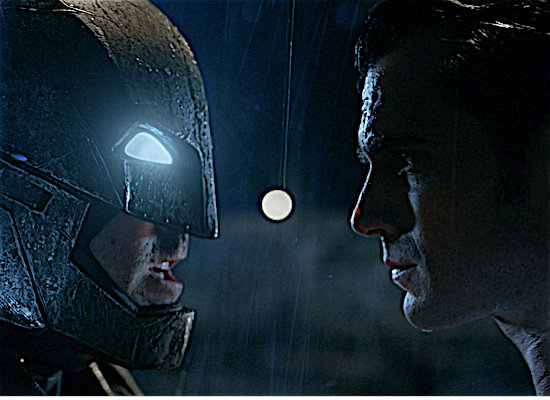
If it achieves anything, Zack Snyder’s messy, badly plotted and awkwardly paced film proves that prepping for a shared universe is no simple task, no matter how easy Marvel makes it look. This seems true even when one is starting with one as established and as powerfully etched into the popular consciousness as DC’s. It’s bad enough that Snyder and company dutifully preserve and transfer many of the excesses and offenses from Man of Steel to Batman v. Superman: Dawn of Justice—the wildly out-of-character behavior by our heroes and a super-mobile Lois Lane to prod the plot along when needed, etc.—the film also is filled with plot holes large and small that will niggle at the mind of those viewers who like their fantasy films to make sense at least within the confines of the worlds they portray. Ultimately, Batman v Superman: Dawn of Justice serves as a reminder of why so many people dislike the Snyderian take on the DC universe—and as a reason to look forward to the solo Wonder Woman film. (See full review.) —Michael Burgin
18. Harry Potter and the Deathly Hallows: Part II (2011)Opening weekend box office: $169 million
Director: David Yates
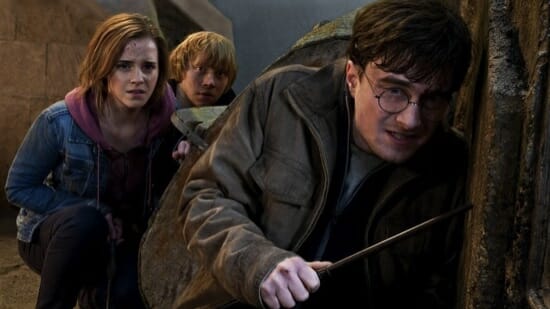
It all ends. And to be sure, it was a fitting end for the storied franchise. Perhaps no other series of children’s films (and few series of films period) has delivered as consistently good visuals and narrative as Harry Potter. The event that was Harry Potter and the Deathly Hallows: Part II can be called nothing less than epic. Picking up right where Part 1 left off, Harry grieves by the seaside grave of the fallen Dobby. His gravestone reads “A Free Elf.” The death of Dobby left moviegoers, even those schooled on and prepared by the source material, gutted. It’s one thing to absorb the pathos from the words on the written page, but the movie medium can pack a harder punch. Of course, without a reverent retelling of the story crafted by the novel’s author, the words become hollow on the screen. And over the course of eight films, the Potter franchise has tried on four directors and two writers, finding success and failure through numerous evolutions. All the while, the three central actors—Daniel Radcliffe, Emma Watson, and Rupert Grint—grew up along with hordes of avid fans. The story depends so much on caring for Harry. Played with timidity by the ever-boyish Radcliffe, we first met Harry as he made his bed under the stairs in the unwelcoming home of a relative. Cast out because he was different, the bespectacled Harry won us over with each installment in the series, managing, often awkwardly, to combat the forces of Voldemort with pure goodness. But as students of the books know, Harry’s innocence is but part of his defense. And the grand plan, politics and treachery, play out in Part II in a clever and challenging manner. What started out in 2001 as a kid’s fantasy matured into something of surprising import and lasting impact. —Jonathan Hickman
17. Iron Man 3 (2013)Opening weekend box office: $174 million
Director: Shane Black
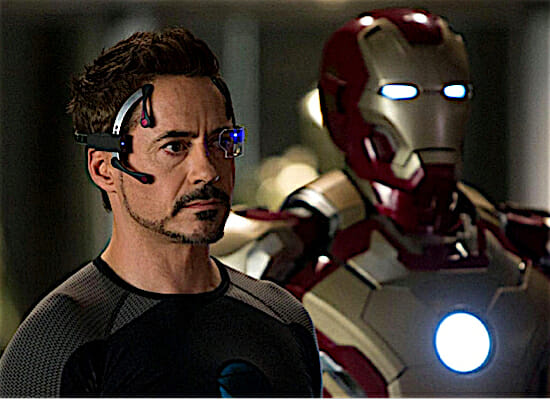
Though its titular hero spends 2/3rds of the film outside his armor, Iron Man 3 works. The film provides just the right mix of action (much of it explosive), chuckles (mostly via banter) and plot (fairly comprehensible). Some of that credit goes to director Shane Black, no stranger to the action genre as a screenwriter (Lethal Weapon, The Last Action Hero), nor to Robert Downey Jr. as a director (Kiss Kiss Bang Bang). At a time when Whedon’s Avengers still loomed large in the rearview mirror (and provided much of the impetus for Tony Stark’s personal character arc in Iron Man 3), Black keeps the plot and pacing under much firmer control than Jon Favreau did in Iron Man 2. But though Iron Man 3 is a better constructed film than its predecessor, ultimately it succeeds for the same reason the first two films did—Robert Downey Jr. is Tony Stark. Whereas most actors, no matter how adept the performance, play second fiddle to the character they portray, Downey Jr. has pretty much displaced Tony Stark, 50 years of comic book character development notwithstanding. In part, it’s because the character himself has never been as compelling as the armor he wore, but mainly, it’s because Downey Jr.’s Tony Stark is just so damned much more enjoyable to be around than Stark Classic. It doesn’t matter that, in terms of hero profiles, Downey Jr.’s breezy, edgy quipping is pure Spider-Man. In fact, it’s telling that, in a realm pretty much defined by a fandom that will wail and gnash teeth about even the slightest deviation from canon, no one really cared. It’s the primary reason why a superhero film where the protagonist spends most of his time out of his armor rather than in it is not just bearable, but downright fun. It’s why the neutering of an arch-villain—though still a troublesome precedent for the Marvel film universe as a whole—works fine within the framework of the film. It’s why, in the frivolous debates of the future, the question “Who was the best Iron Man?” will really be, “Who has done the best version of Robert Downey Jr.?” —Micheal Burgin
16. Beauty and the Beast (2017)Opening weekend box office: $175 million
Director: Bill Condon
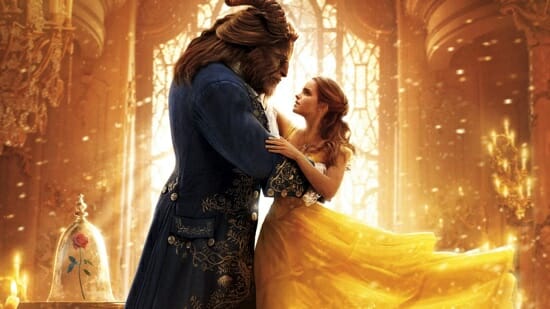
While a generation of kids gape at overwhelming CGI landscapes and a talking teacup, the generation before them wonder where all the magic went. An ostensibly live-action remake of the 1991 Disney animated classic, Beauty and the Beast hits all the notes of the original film slowly and without distinction. The new components of this version are great, but they’re jammed into an older model, one we’ve seen before, which can’t always use them to the best of their abilities. Introductory number “Belle (Little Town)” perfectly contrasts the sweeping introduction from Disney’s castle by looking and sounding like it came from a well-choreographed TV musical special. And yes, here that’s a plus. Cramming the screen with gesticulating townsfolk vying for their moment in the French sun makes a strong case for the song’s premise of a town both too small and too full. Then the plot picks up: Belle’s father and the town tinkerer, Maurice (Kevin Kline), is going to the market and will be back with a rose. Maurice serves as our protagonist for almost the first half hour of the movie, accidentally wandering into Beast’s castle, discovering its magic and anthropomorphic accoutrements, failing to escape, coping with his daughter’s sacrifice—offering herself as prisoner in place of her dad—and eventually running back to town. He wrings every drop of acting juice from his part, giving us an overprotective, loving, encouraging father whose helplessness against a town that doesn’t believe his story is genuinely moving. As the Beast, Dan Stevens gives an engaging performance, manipulating his elastic face and wild eyes into winks, smirks and terribly cold glowering gazes that, when the Beast is the only character on screen, work as well as some of the best CGI creature animation we’ve enjoyed on screen lately. Likewise, Emma Watson nails the role of Belle: Smirking at times, lovelorn at others. She’s the kind of adorably naïve, romantic dreamer that can still sell a little uppityness (“Little town filled with little people”? Belle, this is why the townsfolk dislike you) that makes for a good coming-of-age heroine. Despite some convoluted final action (not Twilight helmer Bill Condon’s directorial strong suit) and unbalanced music, Beauty and the Beast’s teary fairy tale ending survives it all thanks to the brief but colorful relationships we develop with the side characters. Even if they’re not the best they’ve ever been, the story’s quirks and core remain effective. There’s still beauty here to be found. —Jacob Oller
15. Star Wars: Episode IX: The Rise of Skywalker (2019)Opening weekend box office: $177 million
Directors: J.J. Abrams
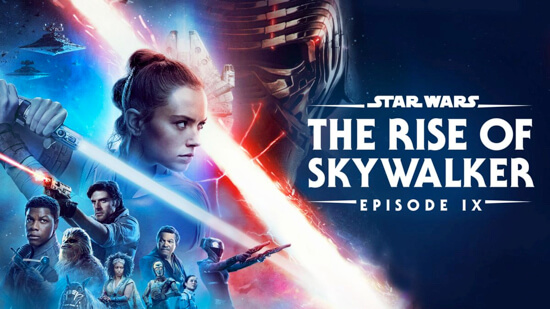
Disney shelled out several hundred million bucks producing, shooting and marketing Star Wars: The Rise of Skywalker. All they got was a lousy mixtape of the series’ greatest hits because money, contrary to popular belief, can’t buy everything, especially ingenuity. The movie’s journey to the screen wasn’t smooth: Fan reaction to Rian Johnson’s The Last Jedi could be disgruntled and toxic, while Johnson’s successor, Colin Trevorrow, unwisely butted heads with Kathleen Kennedy and lost, which led to J.J. Abrams’ return to the director’s chair four years after The Force Awakens. The ups and downs left The Rise of Skywalker a project in need of repair. Abrams obliged, but forgot to bring the scaffolding. The Rise of Skywalker is a stew of ideas in need of an overarching recipe because apparently having an idea is insufficient compared to having all of them. Some are his own. Some are clear responses to Johnson’s take on the Star Wars mythos, as if Abrams thinks appeasing Johnson’s critics equates to making a fully formed movie. But none of his designs enjoy thorough development. They’re presented, then left hanging over the scenes and set pieces to follow. The parentage of Rey (Daisy Ridley), seemingly put to rest in The Last Jedi but hinted at anew in promotional material, supplies the driving plot. The battle for the soul of Kylo Ren (Adam Driver)—the struggle to turn him to the light or lose him forever to the dark—continues. Finn (John Boyega), Poe (Oscar Isaac), Chewie (Joonas Suatomo) and BB-8 (puppeteer Brian Herring) bumble about and trade sitcom banter while looking for purpose in Star Wars’ grand scheme. So it goes. Slowly, agonizingly, over the course of two-and-a-half hours, the house collapses in a stream of Star Wars free association. At best, The Rise of Skywalker solidifies Ridley and Driver as movie stars. At worst, it ends this narrative not with a bang but with a recycled image from a better movie. If that isn’t proof that Disney considers this property more product than art, nothing is. —Andy Crump
14. Captain America: Civil War (2016)Opening weekend box office: $179 million
Directors: Anthony Russo, Joe Russo
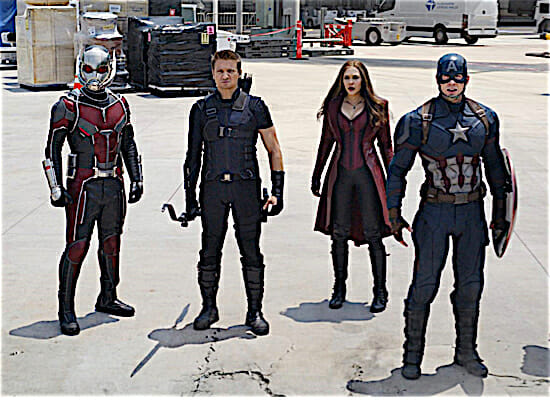
The Russo brothers’ second film in the Captain America trilogy, and their last before tackling the upcoming two-part Avengers: Infinity War films, Civil War maintains the same balance of action and significant (if brief) character development/interaction that made Winter Soldier so enjoyable. The fight and chase scenes are frenetic without being confusing, while the comic relief, mostly supplied by our bug-themed heroes, provides a Whedon-flavored lightening of the otherwise dark proceedings. Even more impressive, the film introduces two additional MCU Phase Three stars—one brand new to filmgoers and the other oh-so familiar—and both generate a real sense of “Man, I can’t wait to see his solo film!” All this is achieved without once veering too far from the core plot of the film. If one thinks of the each MCU film as a juggling act—and each hero’s origin, “flavor” and power set as its own subset of items that must be kept in motion and in proper relation with each other—then as a series both Avengers films and Captain America: Civil War can be seen as an escalation of the routine that’s as impressive as it is necessary. After all, with each additional hero added, with each additional demand placed on the script in both action and dialogue, Kevin Feige and company are building toward Infinity. —Michael Burgin
13. Black Panther: Wakanda Forever (2022)b>Opening weekend box office: $181 million
Director: Ryan Coogler
Black Panther: Wakanda Forever boasts the same director in Ryan Coogler (and the same writing team of Coogler and Joe Robert Cole), who have again created a story whose conflicts and character arcs go deeper than the average MCU fare. Of equal importance, Wakanda Forever again features the Oscar-winning talents of Hannah Beachler (production design) and Ruth E. Carter (costume design). Wakanda remains a vividly realized Afrofuturist cityscape (even in mourning), and the MCU’s newest kingdom, Talokan, though markedly less flashy than James Wan’s Atlantis in Aquaman, feels as real and wondrous as a fictitious Aztec/Mayan underwater realm should. The cast is mostly the same, with Michael B. Jordan’s scene-stealing antagonist Erik Killmonger replaced by Tenoch Huerta’s similarly compelling and cleverly reimagined anti-hero Namor (who is much more integral to Marvel Comics—and likely the MCU—than Killmonger). But how keen the loss contained in that word—“mostly.” Chadwick Boseman’s portrayal of T’Challa was a magical piece of casting alchemy on par with Chris Evans’ Steve Rogers. Coogler confronts the loss directly in Wakanda Forever in a beautiful opening tribute to both actor and character. T’Challa’s funeral is a reminder of just how strong the cast is overall, providing Angela Bassett, Letitia Wright and Danai Gurira some grief-themed scene-chewing of their own. Where Thor: Love and Thunder felt like a lighter, sloppier version of its predecessor, Wakanda Forever feels like a well-considered, necessary next step for a franchise rocked by loss. It’s a tad overstuffed—an entire sub-plot involving Everett Ross (Martin Freeman) feels more like Feige fiat to ensure certain characters and developments are sufficiently presaged—but that only serves as a reminder of the fine line between “laying groundwork” and overpacking. Despite the daunting challenge faced by Coogler and his team, Black Panther: Wakanda Forever feels like the surest step taken in the MCU since Thanos was reduced to ash. It’s both an impressive achievement and a promising development, especially when considers the strong comic book connections between Namor, mutants (he is one), and a certain fantastic foursome on the MCU horizon.—Michael Burgin
12. Incredibles 2 (2018)Opening weekend box office: $182 million
Director: Brad Bird
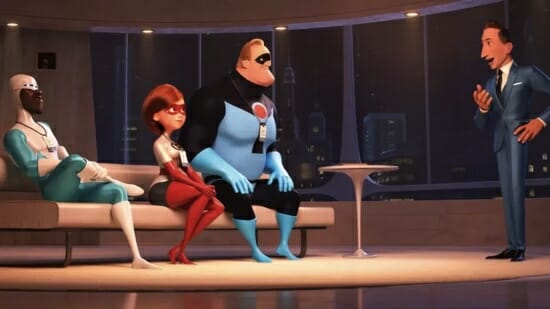
Incredibles 2 starts right where the first film ended, with the costumed Family Parr reacting to the arrival of the Underminer (John Ratzenberger). Their scuffle with the villain gains the attention of Winston Deavor (Bob Odenkirk)—or more precisely, allows Deavor and his sister, Evelyn (Catherine Keener), to gain the attention of the Parrs. The siblings want to bring supers back into the light, using Winston’s salesmanship and Evelyn’s tech to sway public opinion back to the pro-super side. To do so, they want to enlist Elastigirl (Holly Hunter) as the tip of the spear in their charm offensive, leaving Mr. Incredible (Craig T. Nelson) on the sidelines for now. (She tends to fight crime in a manner that results in less property damage than her husband, after all.) This sets up a second act that’s firmly by the numbers in terms of story development—watch the husband try to succeed as a stay-at-home dad!—yet no less enjoyable. Bob’s attempts to handle teen romance, Jack-Jack’s manifestation of powers and, horror of horrors, “new” math will strike a chord with any mom or dad who has ever felt overwhelmed by the simple, devastating challenges of parenthood. (The family interactions, one strength among many with the first film, remain a delight in the sequel.) Meanwhile, we get to watch Elastigirl in action, as she encounters, foils and matches wits with the film’s mysterious villain, Screenslaver. As in the first film, watching Helen Parr do the hero thing is also quite the delight—she’s resourceful, tough and, above all, a professional. Watching Elastigirl operate almost makes one feel sorry for the criminals. Delving more into the plot would do the film a disservice—suffice to say both villainous and family challenges are faced, and it takes a village, Frozone (Samuel L. Jackson) and Edna Mode (Bird) to emerge victorious. Whether you enjoy Incredibles 2 as much as the original will likely depend on your opinion of the latter, but regardless, you’ll be happy both exist. And in today’s sequel-saturated environment, that is practically a superheroic achievement in itself. —Michael Burgin
11. Doctor Strange in the Multiverse of Madness (2022)b>Opening weekend box office: $187 million
Director: Sam Raimi
Marvel still has a lot to figure out with how it handles its women, but it’s getting the multiverse idea under its feet. Doctor Strange in the Multiverse of Madness starts its fast-paced but forgettable first act with dialogue that could be improved by a middle schooler before giving way to an emotional Elizabeth Olsen performance that holds down some eye-roll-inducing lines about motherhood, ridiculous cameos as plot conduits, and horror cinematography, sound and direction bouncing captivatingly between the grotesque and comical. Despite boring opening salvos that reminded me why so many people have grown hateful of the Marvel movies, Doctor Strange in the Multiverse of Madness eventually becomes very fun to watch. It’s weird that so many Sam Raimi fans were hoping for a return to his horror auteur form considering (1) we’ve seen a bunch of skilled indie filmmakers squish their vision into the Marvel frame for a big paycheck and (2) Raimi is known to the wider film-watching public as the guy that made the original Spider-Man trilogy. It’s weirder still that the horror fans were kinda right to be hopeful: The second and third acts are full of horror imagery, jump scares and a Bruce Campbell cameo (and fellow Raimi collaborator Danny Elfman does the score). One of my favorite things about the first Doctor Strange was that the introduction of magic into the MCU meant exciting psychedelic visuals. Multiverse of Madness alternates between being comparatively rudimentary and going past the original into the macabre. Unfortunately, as with all Marvel movies, the director must square their vision with the circle of Kevin Feige’s machine. There are a lot of cool moments, but a lot of the flaws are derived from needing to set up a new superhero and connect to two or three or 20 movies. Opening with heavy CG that the actors aren’t interacting with in a way that’s legible as any kind of tangible space makes it hard to accept the movie. It’s less interesting. Too much time and money was spent on designing those FX monsters for me to come away thinking about how they could have gotten more out of the opening scenes by instead setting them in a series of dark rooms. Doctor Strange in the Multiverse of Madness will surely be a commercial success, but it could have been more artistically satisfying if it wasn’t weighed down by the need to remind people of its outward connections. It stands better on its own than No Way Home but it’s still relying on early ‘00s Fox movies and internet fan castings for theatrical audience pops. Doctor Strange in the Multiverse of Madness is everything you could reasonably expect from a Sam Raimi-Kevin Feige collaboration, but not much more.—Kevin Fox, Jr.
10. Avengers: Age of Ultron (2015)Opening weekend box office: $191 million
Director: Joss Whedon
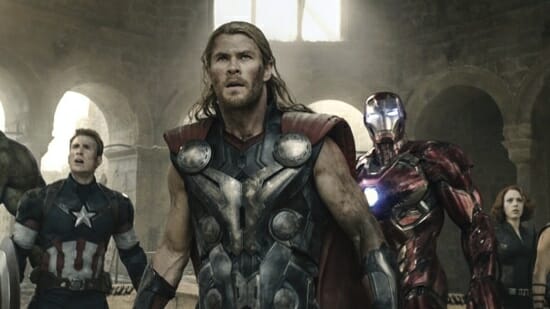
The second Avengers film was warmly received when it initially arrived, but then suffered a bit of immediate blowback, with many superhero genre geeks asserting themselves that although it was undeniably an entertaining film, it represented something of a step back from Joss Whedon’s record-smashing original. Even if it can’t quite match it, and occasionally feels like a bridge toward the next Avengers story, there’s still a whole lot to enjoy in this action-packed yarn. James Spader excels as the voice of the godlike Ultron—a wonderfully arrogant, immature AI character who is only undermined by plot, rather than performance. Ultimately, though, we may remember Age of Ultron more for the storyline fallout it helped generate in the MCU, as Tony Stark’s guilt at creating Ultron is instrumental in driving his position in the fabulous Civil War. Looking back on it in the wake of several other MCU films, its stature has somewhat grown as a result of what it has helped build. —Jim Vorel
9. The Lion King (2019)Opening weekend box office: $192 million
Director: Jon Favreau
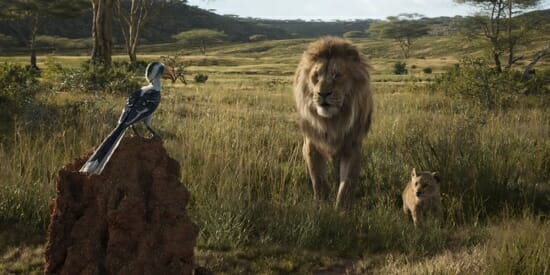
The Lion King feels less like a more “realistic” version of the classic animated original than a bloodless X-ray of it. The new Disney trend of making “live-action” versions of their animated catalog—“live-action,” of course, being the exact wrong term for what this is—can have a purpose besides the obvious profitability of reviving an existing brand name if its goal is to conjure the spirit of the original rather than artificially reinflate its corpse; David Lowery’s Pete’s Dragon wasn’t perfect, but it felt like a fond cover rather than, well, taxidermy. That’s what the new Lion King feels like: It feels like taxidermy. It feels like computers attempting to impersonate real life and doing so with such rigid, determined accuracy that the result feels both emotionless and even a little ghoulish. What exactly are these creatures? The movie is dutifully mounted, and Favreau brings the same dogged professionalism he brought to The Jungle Book, a film with many of the same problems as this film. It does its job all too well. The problem is that The Lion King is The Lion King, you know? This is a universally powerful story, with terrific songs and countless funny and fascinating supporting characters. It’s a classic of performance and sensation. This version, seemingly by design—like that was the damned plan all along—drains every bit of life from it … in order to make it more “realistic.” I would love to watch a documentary about these beautiful animals in the flesh. I would love to watch the original film with its joy and grandeur and scope and sense of fun. This? This bizarre, literal-minded thing? I don’t know what this is. —Will Leitch
8. Black Panther (2018)Opening weekend box office: $202 million
Director: Ryan Coogler
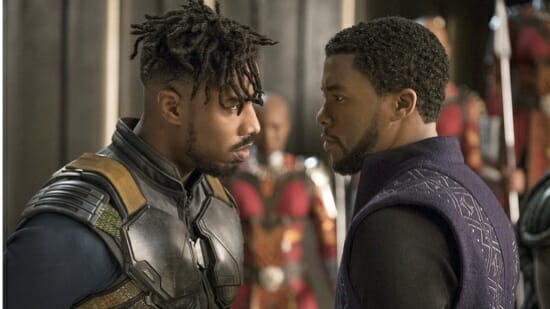
Black Panther might be the first MCU film that could claim to most clearly be an expression of a particular director’s voice. We shouldn’t go so far as to call it auteurist, because it’s still a Disney movie and (perhaps ironically) a part of that monopolizing Empire—i.e., eat the rich—but Black Panther’s action scenes, especially, feel one with Coogler’s oeuvre. Look only to an early scene in a South Korean casino, in which T’Challa (Chadwick Boseman), Okoye (Danai Gurire) and Nakia (Lupita Nyong’o) plan to intercept a deal between Klaue and everyone’s favorite CIA milquetoast, Everett Ross (Martin Freeman, lovable) for a vibranium-filled artifact which Klaue stole from some colonizer-run museum with Killmonger’s help. We’re introduced to Klaue through the surprising spryness of his violence—Andy Serkis, too, freed from mocap, is still an amazing presence, even as a gangster shitbag—and Coogler gets on his wavelength, carving out the geography of the casino in long tracking shots, much like he convinced us to love stained, shitty-seeming Philadelphia gyms in Creed by helping us to comprehend the many crevices and corners of each hole in the wall. When the casino brawl breaks out into the streets, morphing into a death-defying car chase (slow motion thankfully kept to a minimum), we feel as if we know exactly what these characters—and this wonderful director—are capable of. Cue magnificent Vince Staples track. —Dom Sinacola
7. The Avengers (2012)Opening weekend box office: $207 million
Director: Joss Whedon
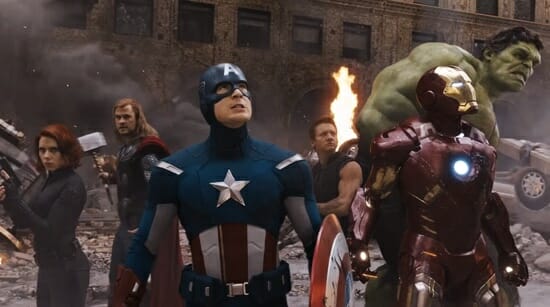
Nestled amongst the gaudy box office numbers of Joss Whedon’s blockbuster is a much simpler achievement. Yes, The Avengers should evoke a deserved appreciation of Whedon’s directorial skills. And yes, the film’s release and reception make for a natural “And that’s when it was official” moment that the MCU took over Hollywood. But for comic book fans especially, The Avengers represents the first instance of the superhero team dynamic truly captured and sustained on film. Even though the X-Men and the Fantastic Four had received big screen treatment, those films were all still pretty static. The interaction between both heroes and villains were slow, separate vignettes rather than two-way, three-way or more-way battles. If Raimi’s Spider-Man showed why comic book superheroes are fun, The Avengers showed why superhero teams are. —Michael Burgin
6. Jurassic World (2015)Opening weekend box office: $208 million
Director: Colin Trevorrow
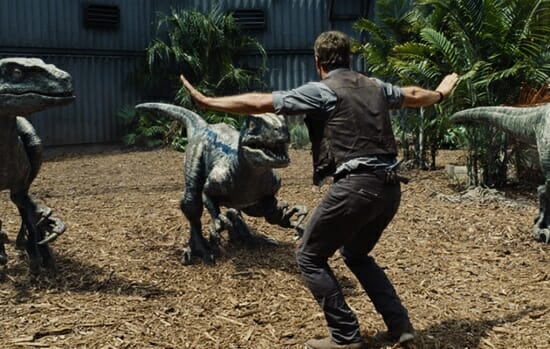
Jurassic World marks the fourth entry in its paleontological franchise, but it’s probably more important as the second chapter in the story of Chris Pratt’s unexpected ascent to movie stardom. Pratt, seemingly born to make a career out of playing lovable doofuses, made his goofy tenor work for him in Guardians of the Galaxy. With Jurassic World, he’s shed that skin almost entirely in favor of aping the hard-jawed macho men of the 1950s B-movie canon. That transformation lends the film inevitability: As if brand recognition didn’t give Jurassic World enough of a box-office edge, the image of Pratt riding a motorcycle side by side a quartet of raptors should sold Colin Trevorrow’s picture to the crowds. That scene, and others like it, let Jurassic World function as a suitably thrilling roller-coaster ride. Unsurprisingly, they don’t add up to a particularly good movie, but Trevorrow has enough diversions stored up his sleeve that the film’s inconsistencies and overarching sloppiness almost don’t matter. Here, we finally get to see John Hammond’s loopy vision of a dino theme park brought to fruition. —Andy Crump
5. Star Wars: The Last Jedi (2017)Opening weekend box office: $220 million
Director: Rian Johnson

The Last Jedi, unlike its predecessor, has the freedom to be daring, and perhaps the most thrilling thing about it—and there are many, many thrilling things—is how abundantly it takes advantage of that freedom. If The Force Awakens was basically just Star Wars told again in a new, but familiar way, The Last Jedi challenges the audience, challenges the Star Wars mythos, even challenges the whole damned series itself. It blows the universe up to rebuild it; it is a continuation and a new beginning. And more than anything else, it goes places no Star Wars film has ever dreamed of going. In a way, the success J.J. Abrams had with The Force Awakens, particularly how decidedly fan-servicey it was, laid the groundwork for what The Last Jedi is able to pull off. That movie reminded you how much power and primal force this series still had. This movie is an even more impressive magic trick: It uses that power and force to connect you to something larger. Not everything in The Last Jedi works perfectly, but even its few missteps are all founded in the desire for something new, to take risks, to push an American myth into uncomfortable new directions. —Will Leitch
4. Star Wars: The Force Awakens (2015)Opening weekend box office: $248 million
Director: J.J. Abrams
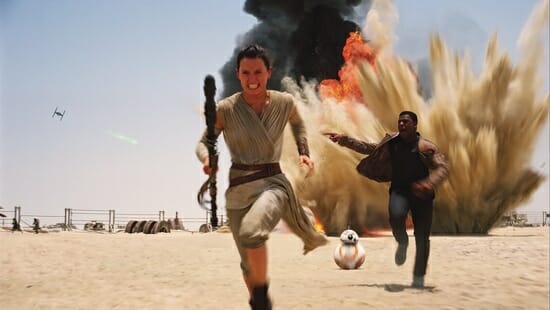
The Force Awakens was the remedy to the near-terminal Prequel-itis of fans. J.J. Abrams and company accomplished this act of restorative cinema primarily through a return to the “dirty future” aesthetic that made the Original Trilogy feel so real (no matter how absurd the dialogue being delivered by the characters). That’s not to say CGI is lacking, but whereas budget and technology constraints helped the first three films and an overabundance hurt the next three, the balance between practical and special effects in The Force Awakens feels near perfect. I say “primarily” not to take away from other factors, such as casting. Daisy Ridley, John Boyega and Adam Driver are all solid, and Oscar Isaac brings a palpable vigor to his role. Ultimately, The Force Awakens just feels right in ways the Prequels never did. —Michael Burgin
3. Avengers: Infinity War (2018)Opening weekend box office: $258 million
Directors: Anthony Russo, Joe Russo
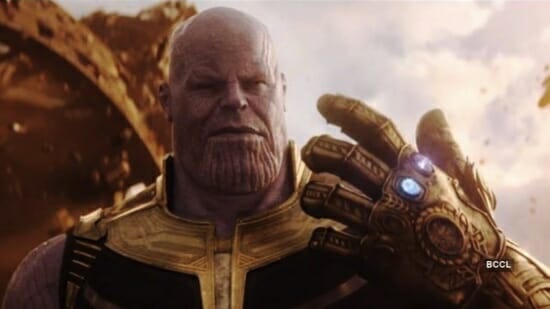
Avengers: Infinity War is epic in a way that has been often aspired to but never fully grasped when it comes to the translation from comic book panel to the Big Screen. It’s what happens when moviemakers take their source material seriously, eschewing unnecessary melodrama even as they fully embrace the grandeur, the sheer spectacle, of it all. (And if there’s one lesson Disney has learned, it’s that if you focus on the viewer experience, the product lines will take care of themselves.) For every frenetic fight scene in Avengers: Infinity War—and there are plenty of them—there are myriad character interactions and emotional beats the audience has been prepped for by the previous films (okay, maybe not 2008’s The Incredible Hulk). As a result, writers Christopher Markus and Stephen McFeely have ample room to riff and play as characters meet for the first time or see each other again. Some of the interactions are easy to anticipate (if no less enjoyable)—the immediate ego clash between Cumberbatch’s Dr. Strange and Downey Jr.’s Iron Man, for example—but our familiarity with these characters adds resonance to nearly every scene and every line, as the vestiges and ripples of emotional arcs laid down in the last decade’s worth of movies bolster even the smallest moment. —Michael Burgin
2. Spider-Man: No Way Home (2021)Opening weekend box office: $260 million
Director: Jon Watts
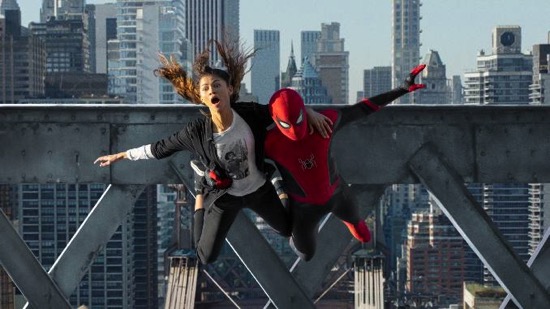
Spider-Man: No Way Home holds no surprises. It’s an intriguing case study of corporate collaboration, a self-aware meme machine, and a lackluster movie that understands its hero so well that the disservice stings all the greater. What director Jon Watts’ trilogy has done better than its Raimi and Webb counterparts is convince us that Peter Parker is a kid. A nervous, charming goodie-goodie with a headful of knowledge and not a lick of sense. So it fits that when he, his girlfriend MJ (Zendaya) and BFF Ned (Jacob Batalon) face problems—blown out of proportion by crippling cases of teen-brain—he’d run off to Dr. Strange (Benedict Cumberbatch) and plead for a magical worldwide memory wipe without really considering consequences or alternatives. What follows, with characters from past Spidey films getting interdimensionally sucked to this NYC, only really makes sense if you’ve been keeping a keen eye on casting rumors. If so, congratulations: They’re here and shenanigans ensue. After so long playing with the legacy and impact of Spider-Man, No Way Home finds its way back. All the spectacle, all the stunt performers and stunt casting—it all evaporates like so many Snapped extras when confronted with small, connected scenes of human-level dramatic filmmaking that remind you why broke loser Peter Parker resonates with us so deeply in the first place. It’s valuable, this recollection, but getting back to Spider-Man basics is a shallow victory with diminished returns. Perhaps the fact that Spider-Man: No Way Home finds any success in this familiar territory, after devoting itself so wholly to unwieldly examinations of its own IP, is itself its biggest surprise. —Jacob Oller
1. Avengers: Endgame (2019)Opening weekend box office: $357 million
Directors: Joe Russo, Anthony Russo
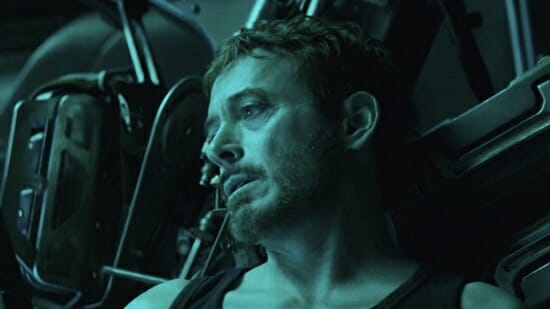
Where does one begin? When it comes to Avengers: Endgame, that question is not so much an expression of wanton enthusiasm as a practical challenge in evaluating the destination toward which Kevin Feige and company have been steering story and viewer alike for the previous 11 years and 21 films. Though there have been plenty of three-hour-plus movies and even a few 20+ entry movie franchises, there’s really nothing to compare with what Disney and Marvel Studios have pulled off, either in terms of size, quality and consistency of cast (a moment of silence for Edward Norton and Terrence Howard), or in how narrow the chronological window, all things considered, those movies were produced. Though we’ve praised it often, casting remains the cornerstone of the MCU. Whether by pitch-perfect distillations of decades-old comic book characters (Captain American, Thor, Spider-Man) or charisma-fueled reinventions of same (Iron Man, Ant-Man, Star-Lord), the MCU’s batting average in terms of casting is not only practically obscene, it’s a crucial ingredient in ensuring the thematic and emotional payoff (and box office payday) of Endgame. Moviegoers have been living with these actors, as these characters, for over a decade. For many, this version of these characters is the only one they know. This is why the sudden ashification of so many heroes at the end of Infinity War hit even the most cynical comic book veterans right in the feels and left less hardened viewers confused and distraught. It’s also why, as Avengers: Endgame opens (after another swift kick to the stomach just in case we’ve forgotten the toll of that snap), the audience cares about not just what the surviving heroes are going to do, but how they are doing in general. It gives the film an emotional resonance that’s unusual not only in pulpier genre offerings but in films in general. This connection makes the quiet moments as valuable to the viewer as the spectacle, and for all the fireworks in the third act, Avengers: Endgame is very much a film of quiet moments and small yet potent emotional payoffs. Comic book fans know the thrill of following all your favorite characters through a multi-issue storyline that culminates in a “universe at stake” ending. Now, thanks to 21 movies in 11 years and one massive, satisfying three-hour finale, moviegoers do, too. —Michael Burgin
